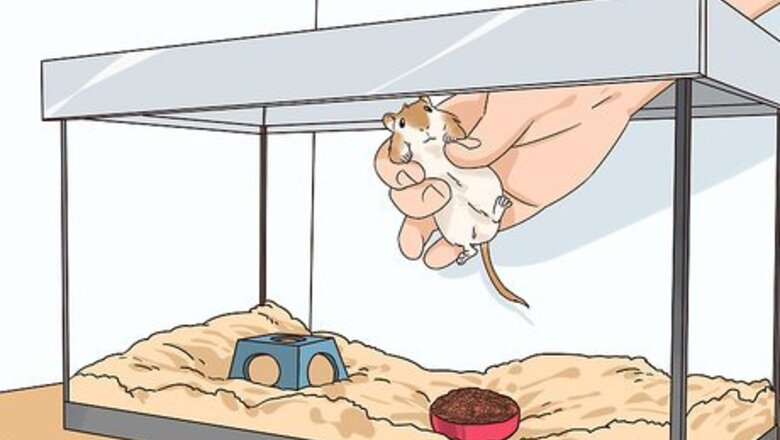
views
Providing a Pet-Safe Environment
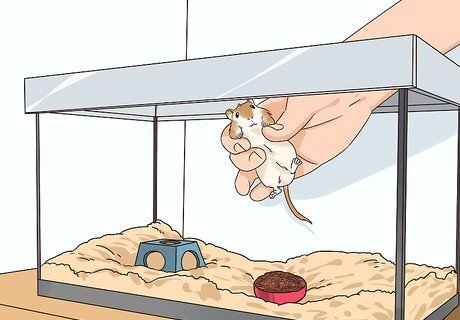
Pick a glass tank that keeps your gerbils inside. Gerbils have a tendency to escape if at all possible, which could lead to them coming to harm. For instance, they can squeeze out of a wire cage between wires, and they may chew up plastic to the point that they can escape. Instead, pick a glass aquarium with a wire-mesh top so gerbils can't escape. The wire needs to be durable so the gerbil can't chew through it. Make sure that you get a wire mesh top for the tank that clips to the top of the tank and slides to open. This type of top will make it harder for your gerbil to escape.
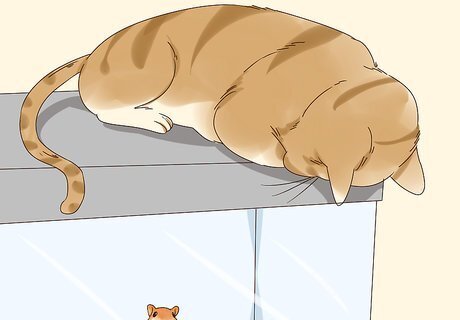
Ensure your other pets can't get in the tank. A cat may be tempted to try to break into the tank if they see the gerbil as prey. Make sure to get a tank that has a lid that closes securely. You may need to place something heavy on top of the wire mesh, such as a brick, to keep an animal from removing the top. If you have a sliding top, then it will be harder for any cats in your home to open as well.
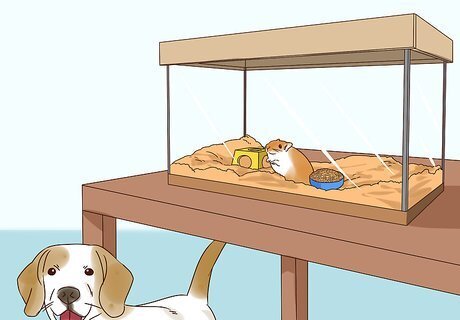
Place them out of eyesight. One trick that can help with dogs is to place the gerbils on a table or desk where your dogs can't see them. That way, the gerbils become out of sight, out of mind for the dogs, unless you bring their attention to the gerbils again. This trick will likely only work for medium to small dogs. If you have a large dog, you might try placing the gerbils up even higher.
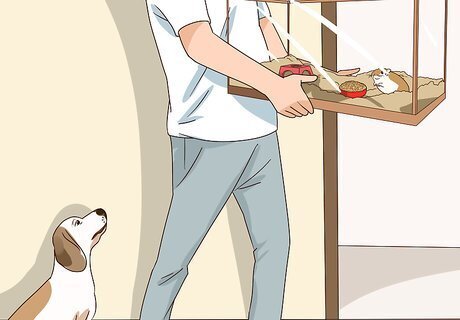
Put them in a separate room. You can also keep the gerbils in their own room. For instance, pick a room that doesn't get much traffic, and keep the door closed. That way, the other animals won't be able to come and "visit" the gerbils on their own. Gerbils like quiet, so pick a room that's not too noisy.
Supervising Introductions
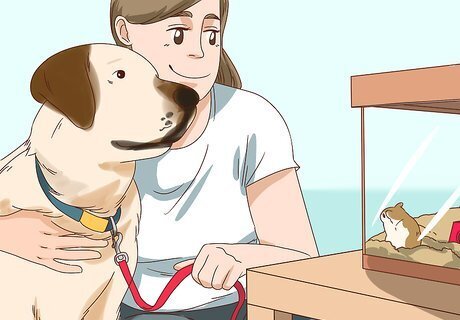
Supervise the introductions. When first bringing gerbils into your home, make sure to supervise how your pets react. You want to be on hand to protect the gerbils if something goes awry. Plus, you want to see if your other animals try to get into the cage, so you can discourage that behavior. It's a good idea to have your dog on a leash at least the first couple of times they will be near the gerbils.

Try a sheet. When your dog or other pet is getting used to the new gerbil, you can hide it from other animals with a sheet while the animals are nearby. That way, the gerbil won't be terrified of the animal, and the other animal will be less likely to follow prey behavior. It also gives your current pets a chance to get used to the smell of the gerbils.
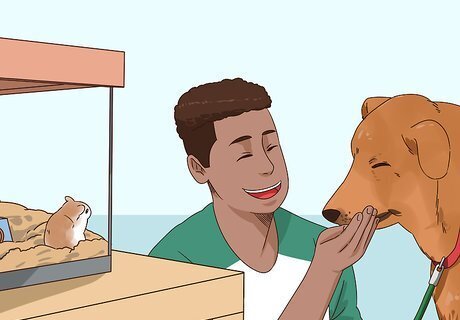
Use treats. When your dog or other animal is being calm around the gerbil, you can reward them with treats. You can also try working on the tricks your dog already knows, such as sit and stay, as it keeps the focus off the gerbil.
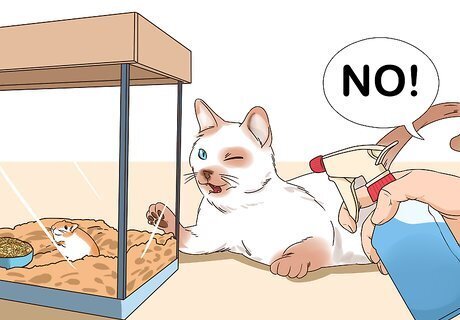
Discourage predator behavior. If your cat or dog tries to attack the cage or shows an overt interest in the gerbils, it's important to discourage that behavior. For instance, with cats, you can spray them with water if they try to get into the cage. With dogs, you can try to discourage them from staring at the gerbils by getting their attention and saying, "No!" Another way to discourage other pets from going near the gerbil cage is to set up motion activated deterrents near the gerbil's cage, such as a Ssscat canister or ScatMat.
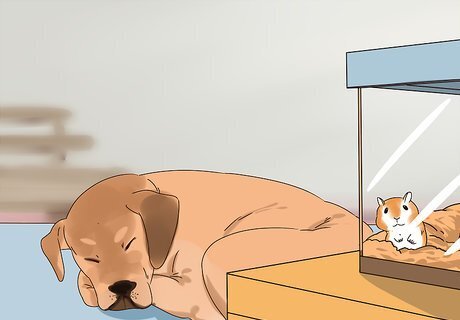
Check for calmness. After a few days of being around each other, look for signs of ambivalence from your other pets. That is, your dog or cat shouldn't be hyper-focused on the gerbils. They should be able to relax around the gerbil, even sleep. As your other animals become calmer around the gerbils, you can start to increase the time they spend around each other. However, never leave a gerbil unsupervised out of its cage with other animals.
Maintaining Daily Safety
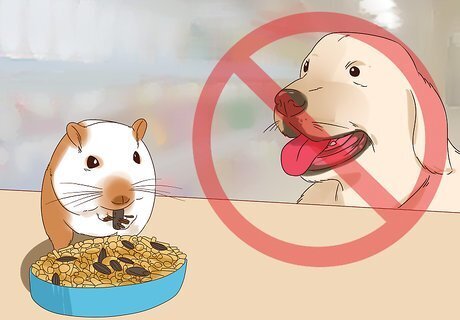
Keep other pets out of the room when handling your gerbils. If you're taking the gerbils out or even if you're just feeding them, it helps to take the other pets out of the room. That way, you can handle the gerbils without encouraging the attention of your other pets.

Plug up escape routes. If you let your gerbil out in a room, check for escape routes first. You don't want your gerbil to escape under the door, for instance. Stuff towels under the door and check for any small holes your gerbil may be able to crawl in.
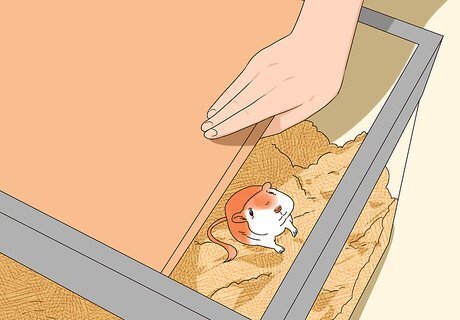
Check the tank is secure each time you close it. Every time you open the gate, make sure to close it securely when you're done. You don't want your gerbils getting out of the tank, and you don't want other animals finding their way into the tank.
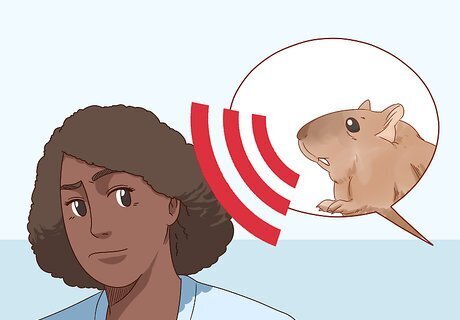
Listen for sounds of your gerbil being in danger. When your gerbil feels threatened, it will make certain noises. It can thump its back legs very loudly in an effort to warn other gerbils. It will also squeak if it feels threatened. If one of your other pets approaches the cage, your gerbils may make one of these noises.




















Comments
0 comment